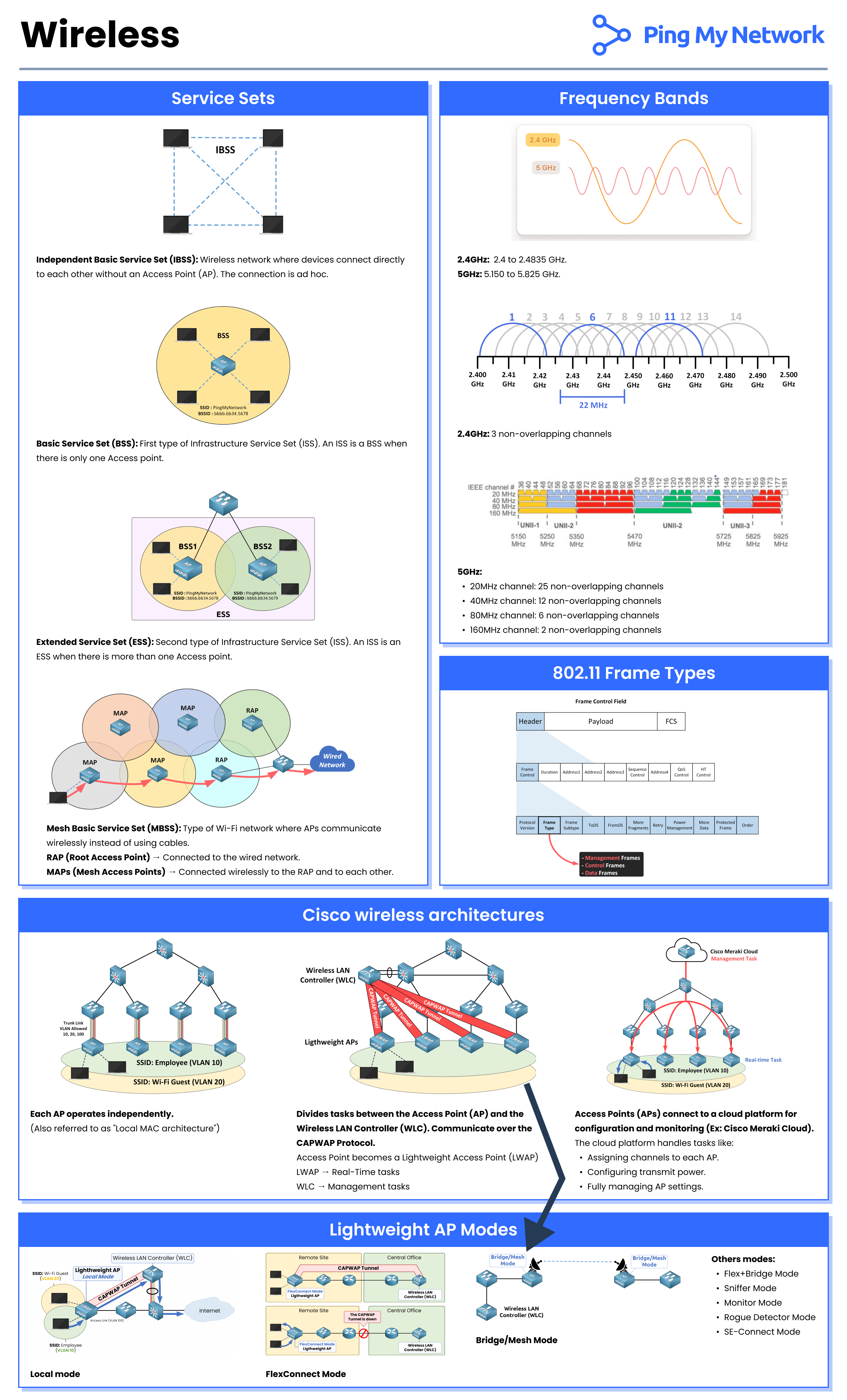Wireless networking connects devices through radio waves instead of cables. It’s a fundamental topic in the CCNA 200-301 exam, helping you understand how Wi-Fi communication works across different layers and components.
Related Lessons
Before exploring the visual summary, review these essential lessons:
Overview
This Wireless CheatSheet summarizes the core principles of WLAN operation and design.
It explains the main service sets (IBSS, BSS, ESS, MBSS), the frequency bands used in Wi-Fi (2.4 GHz and 5 GHz), and the concept of non-overlapping channels that helps prevent interference.You will also find a summary of 802.11 frame types, Cisco wireless architectures, and lightweight AP modes that illustrate how data moves between clients, access points, and controllers in enterprise networks.

Figure 1 - Wireless CCNA CheatSheet
Wireless networks have become a cornerstone of modern enterprise infrastructure. Understanding how Wi-Fi frames are built and how access points communicate with controllers is an essential skill for any network engineer.
At the CCNA level, you should be able to recognize the different service set types, understand frequency channel allocation, and explain how lightweight access points use the CAPWAP protocol to connect to a controller.
Cisco deployments often rely on local, FlexConnect, or mesh modes depending on the network topology and management requirements.
Mastering these modes will help you design, monitor, and troubleshoot reliable wireless LANs that meet real-world performance needs.Answer the question below